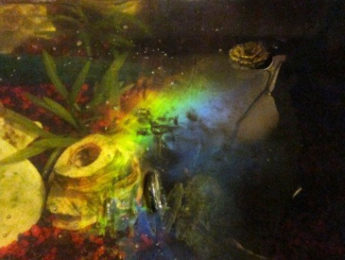The Social Lives of Bacteria
Genesis 11:6a
“And the LORD said, Behold, the people is one, and they have all one language; and this they begin to do….”
 About 300 years after the Genesis Flood, when all people spoke the same language, they decided to work together to build a great city. Working together for a common goal is called “social intelligence.” Do animals practice social intelligence? Of course, there are the bees, the ants and the beavers, but even bacteria – among the lowliest of all creatures – also show social intelligence!
About 300 years after the Genesis Flood, when all people spoke the same language, they decided to work together to build a great city. Working together for a common goal is called “social intelligence.” Do animals practice social intelligence? Of course, there are the bees, the ants and the beavers, but even bacteria – among the lowliest of all creatures – also show social intelligence!
Several types of common bacteria have shown evidence of social intelligence. Contrary to expectation, sometimes this cooperation takes place between unrelated types at the expense of genetically related individuals. Bacterial colonies where cooperation is taking place always attract freeloaders. Such colonies often find ways to discourage or even kill the freeloaders. One such cooperative community is a common soil bacterium. When they locate prey, they swim over the prey like a pack of wolves. Many species of bacteria remain relatively singular until they sense that they have enough to form a community. Then, they communicate to each other by releasing certain molecules which the others sense, and they form slime mold colonies, or a biofilm.
Cooperation and a result of social intelligence can be used to do good or evil. But it doesn’t matter where they are on the imagined evolutionary tree. God has given social abilities to many of His creatures as a means of helping their kind to survive.
Author: Paul A. Bartz
Prayer: Lord, I thank You for the ability to cooperate with others to do good. Help me to better cooperate for the good of all. Amen.
Ref: Science News, 11/20: 2004, pp. 330-332, Bruce Bower, “One-Celled Socialites.” Photo: An iridescent biofilm on the surface of a fish tank. Courtesy of Zaereth. (CC-BY-PDD 1.0)